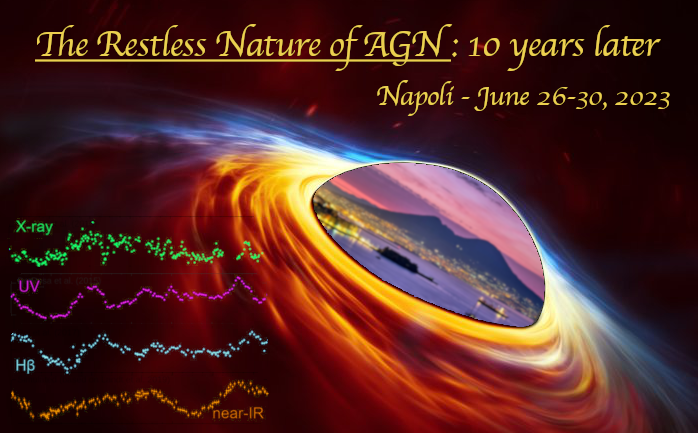Speaker
Description
Several studies of actively accreting supermassive black holes have revealed that large amplitude variability often triggers significant spectral changes; a phenomenon known as changing look AGN (CLAGN). eROSITA through its successive all sky surveys, has made the detection of the sources using the X-ray band much more systematic. In 2020, eROSITA along with the Zwicky Transient Facility(ZTF) detected a flaring event in a type-1.9 AGN, where a sharp change of $\sim 0.55$ and $\sim 0.3$ in g- and r-band magnitudes was seen in $\sim 81$ days. We performed an extensive multiband follow-up campaign on the object for two years. Immediate optical follow-up using the Keck telescope revealed the appearance of a double-peaked H$\beta$ emission line (previously absent in a 2005 6dF archival spectrum) and a bluer continuum compared to 2005, confirming a CLAGN event. The X-ray light curve exhibits an extreme flux variation. The X-ray spectral photon index is typical for AGN accretion. The long-term X-ray and optical light curves reveal a weaker second flare during early 2020. More optical spectroscopic follow-up shows that integrated flux of the Broad emission lines of H$\beta$ and H$\alpha$ tracks the X-ray–UV–Optical continuum. The infrared emission also responds to the transient variability. This transient event with multiwavelength signature is a sudden, temporary rise in accretion rate over a persistent, low accretion flow, e.g., speculatively caused by an accretion disk instability.

